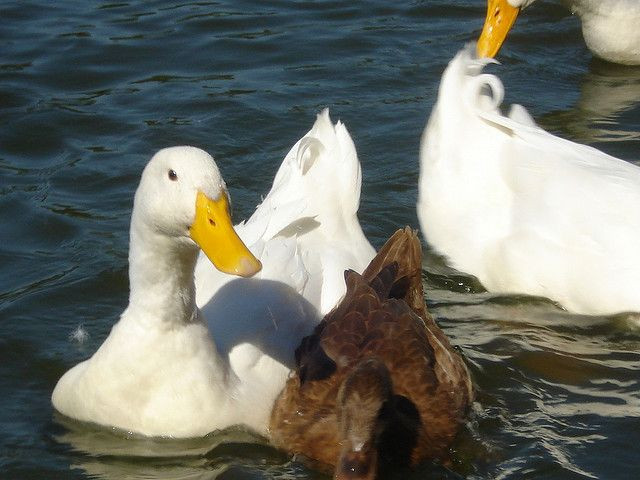What's In A Duck? Genetic Clues For Understanding Bird Flu Outbreaks

Avian influenza or bird flu viruses are known to hideout in ducks, yet little is known about why these aquatic birds are such great reservoirs for these dangerous bugs. To search for answers, an international team of scientists has sequenced the duck genome for the first time and discovered a few clues that explain the relationship between winged host and virus. Their report was published in Nature Genetics
The 2004-2006 H5N1 avian influenza outbreaks highlighted the marquee roles that ducks play in the spread of bird flu viruses. Given their migratory habits, ducks served as the perfect transportation for redistributing H5N1 from Vietnam and Thailand, where the new strain emerged. It is believed that they perpetuated the outbreaks by passing the virus onto chickens, crows, and pigeons — birds that have intimate contact with humans.
Ducks are known as 'silent carriers' of bird flu, as most avian influenza viruses don't make them sick. This relationship makes the waterfowl a perfect place to hideout and adapt, rather than kill its messenger in its tracks. It is suspected that the H7N9 strain that threatened China this spring evolved some of its dangerous traits in ducks.
To explain why these birds are resistant to the harmful effects of bird flu, scientists turned to the duck's DNA composition. They sequenced the genome of a Beijing duck to investigate its genes involved with immunity.
Overall, they found ducks have about 2,000 fewer immunity-related genes relative to mammals like humans and mice. Ducks also have immunity genes not present in other birds like chickens, which may explain why avian influenza viruses are more lethal in chickens than ducks.
The authors demonstrated this by looking at how ducks respond to two different H5N1 strains; one caused illness in ducks, while the other was harmless. By looking at how immunity genes react to infection, they found the disease-causing strain had evolved to overcome the duck's defenses.
This preliminary investigation should serve as a gateway to exploring how ducks spread avian influenza virus and how it hops from birds to humans.
Source: Huang Y, Li Y, Burt DW, Chen H et al. The duck genome and transcriptome provide insight into an avian influenza virus reservoir species. Nature Genetics. 2013.



























